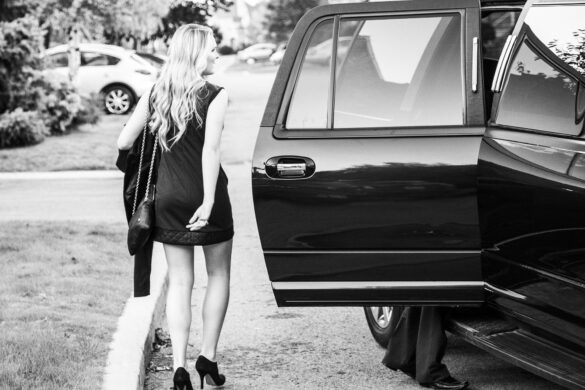The Amish community’s rules govern their growing population, which has doubled in the last 20 years to reach approximately 265,000 members throughout North America. These people live among modern society but strictly follow an unwritten code called the Ordnung that dictates their plain clothing choices and rejection of most modern technologies.
Their cultural rules shape much more than just the visible parts of their lifestyle. Most people recognize Amish horse-drawn buggies and simple attire, but few truly understand their complex social structures that preserve their unique way of life. Religious beliefs form the core of Amish culture rules, and they practice a conservative Christianity that emphasizes separation from the outside world. The community doesn’t use conventional electricity in their homes, yet they selectively use batteries and generators when needed. This thoughtful approach to technology shows their steadfast dedication to keeping community bonds strong rather than completely rejecting modern advances.

The Ordnung: The Foundation of Amish Rules
The Amish society builds its foundation on a detailed system of guidelines called the Ordnung. These guidelines define their unique way of life. The Ordnung works differently from regular legal systems. It acts as both a moral guide and a practical handbook that sets boundaries between the Amish and the outside world while protecting their cultural identity.
What is the Ordnung?
The Ordnung (said as “ord-nung”) comes from a German word meaning “order” or “discipline.” These guidelines are the foundations of Amish culture rules and touch almost every part of daily life. The Ordnung isn’t just a list of things you can’t do. It gives a detailed framework to support core values like humility, simplicity, and staying separate from worldly influences.
Many Amish don’t see the Ordnung as just rules. They see it as a guide to help their communities live a faithful Christian life. Each Amish district has its own version of the Ordnung. This shows how independent their church governance is. That’s why Amish rules can be quite different between settlements and even neighboring districts.
The Ordnung covers practical things like:
- Dress codes (plain clothing without patterns or bright colors)
- Technology limitations (restrictions on electricity and modern conveniences)
- Social behaviors (expectations for family life and community participation)
- Religious practices (worship formats and church leadership)
The Ordnung has deeper spiritual meaning too. Amish people show their humility and faith by following these guidelines. These rules aim to stop pride, envy, and individualism—traits they believe hurt Christian character.
How it shapes daily life
The Ordnung touches almost every part of Amish life. From morning to night, Amish people make choices based on these understood guidelines. Take electricity use as an example. Most Amish don’t connect to public power grids. It’s not because electricity is bad, but because these connections might bring unwanted outside influence and weaken community bonds.
The Amish’s view on technology is more complex than most people think. Some districts let people use specific technologies for business but limit others that might hurt family unity. So you might see solar panels on an Amish barn but won’t find a TV in their home.
The Ordnung also sets clear roles for gender and family. Marriage rules don’t allow divorce and stress the husband’s leadership role with the wife’s supporting role. Children learn these expectations early and understand what they owe to family and community.
Each district reviews the Ordnung twice a year before communion services. Members confirm their commitment to these shared guidelines during “Counsel” meetings. This shows how their tradition stays alive and adapts.

Why it remains unwritten
The sort of thing I love about the Ordnung is that most communities keep it unwritten. This oral tradition serves several key purposes in Amish society.
An unwritten Ordnung stays flexible. Communities can adapt to new situations without formal changes because nothing is set in stone. This explains why some Amish now accept certain technologies like pneumatic tools or battery-powered lights while keeping their core principles.
The oral tradition gives importance to elder’s wisdom and memory. As one Amish person put it, “The people just know it, that’s all”. This approach builds stronger bonds between generations and keeps people talking about community standards.
Keeping the Ordnung unwritten also prevents too much focus on rules. Members must understand the meaning behind the guidelines instead of just following rules blindly. This promotes thoughtful action rather than mere compliance.
Some newer settlements with people from different communities have written Ordnungs to set basic agreements. But even these written versions only cover potentially disputed points. Many practices still pass down through watching and taking part in community life.
Rules for Men, Women, and Children
Life in Amish communities follows clear rules that shape personal appearance, family dynamics, and childhood development. Religious beliefs shape these regulations. The result is a society that values modesty, traditional roles, and community over individual expression.
Modesty and dress codes
Modest attire stands out as one of the most visible elements in Amish people’s rules. Community members must follow specific guidelines. Members who join the church through baptism pledge to follow these dress codes and may face excommunication if they break their vow.
Men wear solid-colored clothing without patterns. Their choices include black, blue, burgundy, brown, purple, or green. Marriage requires men to grow beards. They cannot have mustaches because these show a connection to military uniforms that go against their pacifist beliefs. Their trousers use buttons instead of zippers. They wear suspenders rather than belts to avoid flashy buckles.
Women’s modesty shows through plain, ankle-length dresses with long sleeves and high necklines. A married woman’s church attire includes black capes and aprons, while single women wear white ones. Women’s heads stay covered with prayer caps or head coverings each day. This allows them to pray any time. Their practice comes straight from biblical teachings in Corinthians 11:6.
Amish culture’s dress rules highlight function over fashion. This reinforces their steadfast dedication to simplicity and separation from worldly influences.
Gender roles in the home and community
The family stands as the core social unit in Amish society. Gender roles define daily interactions. Amish beliefs place the husband as the household’s head. He makes key decisions and speaks for the family in public.
Men serve as breadwinners through farming or trades. They handle church matters and outside-world interactions. Women run household operations. Their duties include cooking, cleaning, gardening, and raising children.
Notwithstanding that these roles follow tradition, they don’t mean inequality exists. Women take part in family’s financial decisions. Many have their names on property deeds among their husbands. Some communities see women running successful bakeries, fabric shops, or restaurants. Women also have equal voting rights in church functions but cannot serve as officials.
One Amish man put it this way: “the husband is the King and his wife, the Queen”. This shows how both roles carry distinct authority in their own areas.
Rules for Amish children
Amish children learn community expectations through teaching and watching others. They receive pampering like other children until age two. Then they start facing discipline for bad behavior. Five-year-olds begin simple chores. Their responsibilities grow with their strength and skills.
Education follows strict rules in Amish communities. Children attend school through eighth grade, usually until they turn 14. Work begins after school ends. Children’s paychecks help the family budget until they reach 21.
This disciplined approach explains why Amish children’s behavior impresses many observers. Spanking remains common at home and school. Amish guides stress that discipline should come from love, not anger.
Obedience to parents and respect for elders top the list of requirements for Amish children. Hard work becomes second nature as they care for younger siblings and help with family tasks. These experiences build the strong work ethic and community spirit that will guide their adult lives in Amish society.
Technology and Modern Life: What’s Allowed and What’s Not
The Amish make practical choices about technology instead of rejecting it completely. They’ve created a thoughtful system that welcomes some breakthroughs while limiting others. Their careful selection of modern tools shows their commitment to keeping community bonds strong and protecting their lifestyle from outside influences.
Do Amish people use electricity?
The answer to “do Amish people use electricity?” isn’t simple. Most Amish communities won’t connect to the public power grid. This choice isn’t about electricity being forbidden – they see grid connections as ties to the outside world. Power access could bring unwanted technologies like TVs and internet that might distract from their values.
In spite of that, Amish communities have found creative ways to power their essential tools:
- Battery-powered lights and appliances
- Diesel generators for workshop equipment
- Compressed air systems to run machinery
- Solar panels for charging batteries
- Hydraulic systems powered by gasoline engines
An Amish carpenter might use pneumatic tools with diesel compressors in his workshop but won’t have electrical outlets at home. Each Amish community sets its own rules about electricity. Conservative groups ban almost all electrical devices, while progressive settlements allow some electricity for business.
Rules around phones, cars, and tractors
Amish communities strictly control communication and transportation technology. They won’t let members own cars because frequent long-distance travel could weaken community bonds. They do allow hired drivers for necessary trips to far places or medical facilities.
Phone use follows strict guidelines. Amish culture keeps phones out of homes because they could interrupt family time and prayer. Many communities allow:
- Community phone booths at settlement edges
- Phone shacks in workshops for business calls
- Cell phones for business owners (in progressive communities)
- Voicemail services accessed from outside phones
Farm equipment rules vary by settlement. Most communities won’t allow rubber-tired tractors that could replace horse-drawn tools. Some places allow steel-wheeled tractors that can’t travel on highways, while others permit modern equipment only for stationary work like threshing.
Why some technology is accepted
People often feel confused by how Amish communities choose which technology to use. Their decisions follow clear principles that make sense:
The Amish want to stay separate from the world while having enough modern tools to survive economically. They welcome technology that helps their community or meets real needs, as long as it doesn’t threaten their values.
Most communities see a difference between using something and owning it. An Amish person might use a library computer but not own one, or ride in a car without driving it.
Different Amish settlements have different rules. Old Order groups keep stricter limits, while New Order Amish allow more technology, including some electricity and phones in businesses.
Common sense plays a big role in these decisions. One Amish businessman gave an explanation: “We try to keep a slower pace of life, but we’re not trying to stop the clock completely.” This practical approach helps the Amish adapt while keeping their community’s unique character.
Marriage, Courtship, and Family Life
The Amish community has well-laid-out paths for family formation. Their courtship and marriage follow clear guidelines that have stood the test of time. A marriage means more than just two people coming together – it represents their dedication to community values and religious beliefs.
Amish people marriage rules
The Amish church only allows marriages between its baptized members. Boys usually start courting around age 16, while girls begin between 14-15 years old. Most couples tie the knot between ages 20-22, which happens much earlier than typical American marriages. Large families are seen as blessings from above, and an average Amish family raises seven children.
The community strictly prohibits divorce. Anyone who gets divorced faces being cut off and shunned from their community. The rules state that a person whose spouse gets divorced cannot marry again. These strict rules make couples work hard to fix their marriage problems. They often turn to church leaders or Christian counselors for help.
The practice of bundling
Conservative groups like Swartzentruber or Old Order Amish practice a unique courtship tradition called “bundling” or “bed courtship”. This custom lets an unmarried couple lie fully clothed in bed and spend time talking to know each other better. A board placed down the middle of the bed traditionally kept them apart.
This practice started in Europe during times when religious groups faced persecution. It helped couples hide from authorities while staying warm. European immigrants brought this tradition to America. Today, only the most conservative Amish groups keep this practice alive.
Role of family in choosing partners
A marriage brings entire families together, not just two people. Parents play a key role in partner selection. They help ensure genetic diversity while keeping resources within their community. Family approval matters greatly since couples maintain close ties with both families after marriage.
The rules forbid any pre-marital relations. Courtship typically starts when a young man asks to drive a young woman home after community gatherings. Either person can end the relationship whenever they choose.
Rules after marriage
Newlyweds follow a unique honeymoon tradition. They spend their first night at the bride’s parents’ home. The next morning brings them together to clean the house as a thank you gesture before visiting relatives. Only then do they spend their first night alone.
The husband leads the household, and his wife usually runs domestic matters. Many decisions happen jointly, with women having equal say in family matters. Both parents share the job of raising children and stay close to them even after their children start their own families.
Breaking the Rules: Rumspringa, Shunning, and Excommunication
Amish communities use specific enforcement mechanisms that help them follow amish people rules. These unique practices deal with teenage exploration and adult rule-breaking. A closer look at these mechanisms shows how Amish communities keep their distinctive lifestyle despite outside pressures.
What is Rumspringa?
Pennsylvania German word “Rumspringa” means “running around” and marks adolescence in Amish society. Teenagers around age 16 enter this phase where they aren’t baptized church members yet and have more weekend freedom from parental oversight. Popular belief suggests wild rebellion, but this isn’t accurate. In fact, most young people stick to traditional behaviors during this time.
Young people usually join supervised activities like volleyball, swimming, ice skating, and “singings.” These gatherings involve hymn singing followed by socializing and meals. This period lets young people find potential marriage partners. The results speak for themselves – 80-90% of youth choose baptism and commit to the Amish way of life.
What happens if rules are broken?
Breaking rules of the amish sets a specific response in motion. Church leaders visit the person who broke the rules to talk about the violation, whether they used forbidden technology or did something sinful. The person can make things right through confession to the bishop or the whole congregation if they show remorse.
A short excommunication of about six weeks usually follows the confession. The community welcomes the person back afterward and puts the matter to rest. People who don’t admit wrongdoing or keep breaking rules face harder consequences.
How shunning works in the community
Shunning (Meidung) means social separation from excommunicated members. Amish beliefs root this practice in biblical teachings. It protects the community from bad influences and helps bring back those who strayed.
Shunned individuals can’t share meals with community members. Others can’t do business with them, take rides, or accept their gifts. The person loses access to community activities. All the same, people can still talk to them and help them when truly needed.
Different communities handle shunning differently. Conservative groups follow stricter rules, while progressive ones might allow some interaction. The practice only affects baptized members who break their promises, not unbaptized people or outsiders.
Amish life follows rules that show a careful approach to keeping community values while dealing with our modern world. These communities have managed to keep a fine balance between tradition and adaptation through their history. Their unwritten Ordnung stands as the life-blood of their society. It sets guidelines that encourage humility, simplicity, and distance from worldly influences.
These rules work as protective boundaries that build stronger family bonds and community ties, rather than just being restrictions. Gender roles with clear definitions, dress codes that emphasize modesty, and careful choices about technology all support this shared goal. These distinctive lifestyle choices have helped Amish communities grow and prosper.
Many people misunderstand Amish practices, but their rules show they are quite practical. The sort of thing I love is how Amish people don’t reject all modern conveniences outright. They carefully review each technology based on how it might affect their community’s unity. Their practices like bundling during courtship and temporary excommunication when rules are broken show a community that values personal growth alongside shared standards.
Amish communities continue to thrive despite pressure from mainstream culture. Their numbers have doubled in the last two decades, which proves their way of life works well. Their rules might look too strict to outsiders, but they give members a clear sense of purpose and belonging in today’s scattered world. The soaring win of Amish communities shows a different view of progress and happiness than most modern thinking.
Here are some FAQs about amish people rules:
What are the rules of the Amish?
The rules of Amish people govern nearly all aspects of daily life according to their religious Ordnung. Amish people marriage rules dictate courtship practices and prohibit interfaith unions, while other rules for Amish people cover technology use, dress codes, and transportation. What are the rules of Amish people varies slightly between communities, but all emphasize separation from modern society and simple living.
Can Amish use condoms?
Birth control methods like condoms generally violate the Amish people rules regarding family planning and God’s will. The rules for Amish people encourage large families and view reproduction as divinely ordained. While enforcement varies, what are the rules of Amish people typically prohibit artificial contraception as interfering with natural processes.
What is the most strict Amish?
The Swartzentruber Amish are considered the strictest, enforcing the most conservative Amish people rules. Their rules for Amish people prohibit even the limited technology other Amish groups allow, maintaining extremely plain dress and strict shunning practices. What are the rules of Amish people in Swartzentruber communities extends to forbidding indoor plumbing and most modern conveniences.
What are the Amish rules for dating?
Amish people marriage rules govern courtship, requiring supervised visits and prohibiting physical contact before marriage. The rules for Amish people dictate that dating only occurs between baptized church members, typically leading to marriage within a year. What are the rules of Amish people regarding romance emphasize modesty, with couples getting to know each other through Sunday night singings and buggy rides.
Can the Amish drink coke?
While not explicitly forbidden in Amish people rules, many conservative groups discourage caffeinated sodas as worldly. The rules for Amish people vary by community – some allow occasional Coke consumption while more conservative sects prohibit it. What are the rules of Amish people regarding food and drink generally promotes simplicity over complete prohibition of modern products.
Can Amish have cell phones?
Most Amish people rules prohibit personal cell phone ownership as they represent worldly connections. However, rules for Amish people sometimes allow shared community phones for business needs. What are the rules of Amish people regarding technology continues evolving, with some younger members pushing boundaries during Rumspringa.
Can Amish people use showers?
Amish people rules permit basic hygiene, with many using simple showers or washbasins despite avoiding modern plumbing. The rules for Amish people emphasize cleanliness while rejecting vanity, allowing practical bathing solutions. What are the rules of Amish people regarding showers depends on the community’s interpretation of technology use.
How do Amish make money?
Within Amish people rules, common occupations include farming, woodworking, and construction that align with their values. The rules for Amish people encourage self-sufficient businesses that don’t require modern technology. What are the rules of Amish people regarding work emphasizes manual labor and craftsmanship over corporate employment.
Do Amish girls get pregnant during Rumspringa?
While Rumspringa allows more freedom, Amish people marriage rules still strongly discourage premarital sex. The rules for Amish people maintain that pregnancy outside marriage brings shame, though it occasionally occurs. What are the rules of Amish people regarding sexuality means most return to baptism and traditional values after this experimental period.









